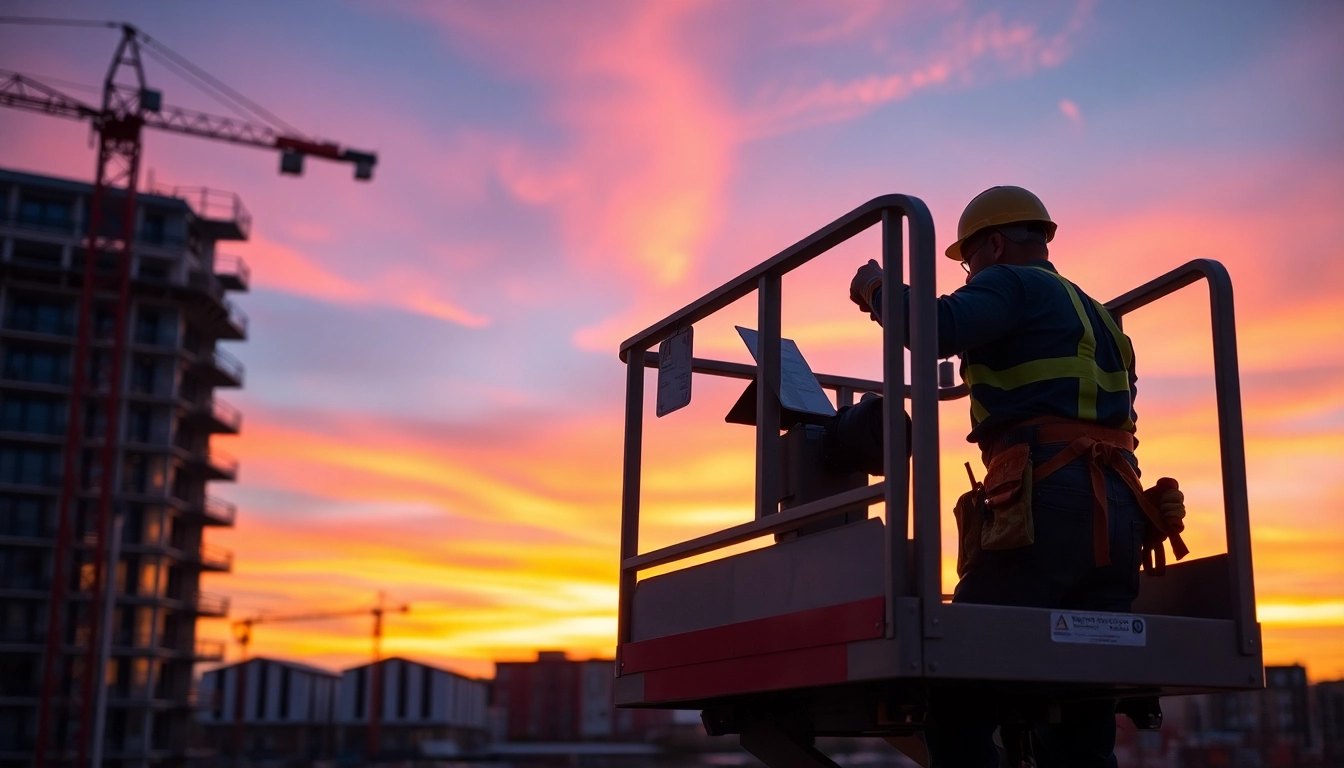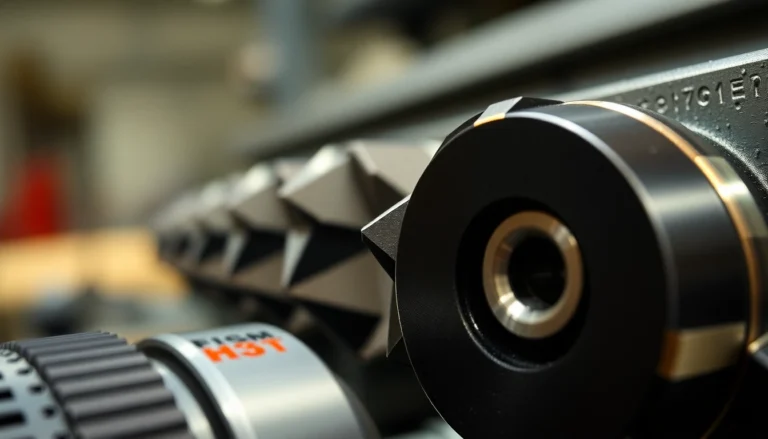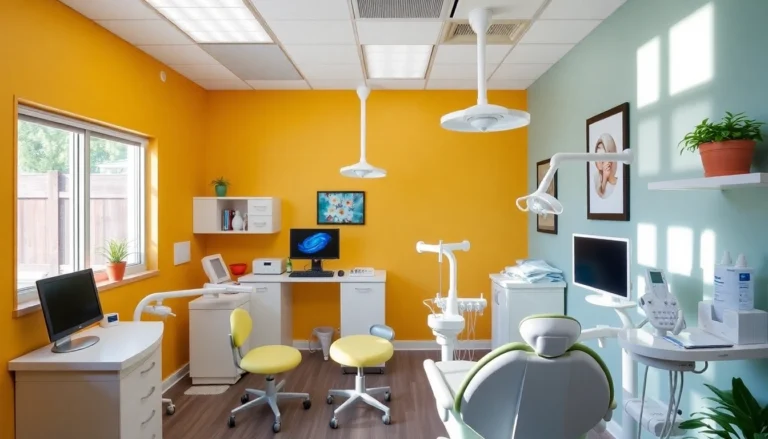
Understanding the Basics of Aerial Work Platforms Rental in the UK
Aerial work platforms (AWPs), commonly known as cherry pickers, boom lifts, or scissor lifts, have become indispensable in modern construction, maintenance, and industrial operations across the UK. Their ability to provide safe, efficient access to elevated work sites makes them a preferred choice for numerous projects ranging from building renovations to electrical installations and even event setups. Engaging in aerial work platforms rental allows businesses to access versatile equipment tailored to specific project needs, without the overhead costs associated with equipment ownership. Understanding the fundamental aspects of renting AWPs — including types, features, and rental options — is essential for maximizing efficiency, safety, and cost-effectiveness.
Types of Aerial Work Platforms Available for Rent
The rental market offers a diverse array of aerial work platforms, each designed to meet different operational and environmental requirements. These include:
- Scissor Lifts
- Ideal for horizontal elevation and straight vertical lifting, scissor lifts provide a stable platform suitable for indoor and outdoor applications. They are perfect for tasks requiring a broad working area, such as painting, electrical work, and facility maintenance. They come in hydraulic and electro-hydraulic variants, with platform heights typically ranging from 6 to 20 meters.
- Boom Lifts (Articulating and Telescopic)
- Boasting flexible arm designs, boom lifts can reach over obstacles and into hard-to-access areas. Articulating booms are especially useful for complex tasks requiring multi-directional reach, while telescopic booms excel in extending straight outward for increased outreach. These platforms are available in electric, hybrid, and diesel-powered models, with working heights extending beyond 30 meters.
- Vertical Personnel Lifts
- Designed for confined indoor spaces, these lifts typically have smaller footprints, easy maneuverability, and are suitable for maintenance, repair, or cleaning at moderate heights (up to 13 meters). They are lightweight and often electric-powered for indoor safety compliance.
- Crawler and Spider Lifts
- These versatile units are equipped with track-based mobility, enabling access over rough terrains or delicate surfaces, such as in tree work or construction on uneven ground. Their compact design allows for operation in tight spaces.
- Lorry-mounted and Trailer-mounted Platforms
- Ideal for rapid deployment across multiple sites, these units combine mobility with power, suitable for outdoor construction and industrial maintenance.
Key Features and Specifications to Consider
Choosing the right aerial work platform hinges on understanding essential features and specifications that align with project requirements:
- Maximum Working Height: Ensure the platform can reach the highest point of your work area, accounting for operator safety margins.
- Load Capacity: Consider the weight of personnel, tools, and materials. Most platforms specify Safe Working Load (SWL); for example, the Genie AWP30S supports up to 159kg.
- Power Source: Electric lifts are preferred for indoor use due to zero emissions and reduced noise, while diesel and hybrid models are better suited for outdoor, heavy-duty applications.
- Platform Dimensions: Size matters for access through narrow passages or confined spaces. Compact platforms facilitate easier maneuvering.
- Mobility and Terrain Capabilities: Options include four-wheel drive, crawler tracks, or stabilizers, affecting stability and ease of movement on different surfaces.
- Safety Features: Look for features such as emergency descent systems, overload protection, tilt sensors, and safety railing compliance (e.g., EN 280 standards in Europe).
Common Rental Options Based on Project Scope
Rental providers typically offer flexible packages aligned with project duration and complexity:
- Short-term Rentals
- Ideal for one-off jobs or seasonal projects, often ranging from daily to weekly rentals. These packages include maintenance and technical support to minimize downtime.
- Long-term Rentals
- Designed for ongoing projects or multiple phases, offering discounted rates and comprehensive service options. Suitable for large-scale construction, facility upgrades, or industrial installations.
- Operational Hire with Operator
- For teams lacking licensed operators or requiring specialized handling, rental companies often provide trained personnel along with equipment, ensuring compliance and safety.
- Equipment Lease & Maintenance Packages
- Some providers combine rental with maintenance services, reducing operational risks and ensuring equipment is regularly inspected and serviced.
Choosing the Right Aerial Work Platform for Your Project Needs
Assessing Height and Weight Requirements
Proper assessment of the project’s height and weight requirements is critical. Overestimating height leads to unnecessary costs, while underestimating can jeopardize safety and project timelines. Measure the highest point requiring access, adding safety margins to accommodate workspace variances and operator movement. Similarly, evaluate the weight of personnel, tools, and materials to ensure the selected platform can handle the load without risking overload conditions. For example, a job requiring access to 12 meters with a load of 200kg might necessitate a platform with a SWL of at least 250kg, providing a safety buffer.
Indoor vs Outdoor Rental Options
Indoor projects demand electric or battery-powered platforms with low emissions and minimal noise levels. Compact, lightweight units like vertical lifts and small scissor lifts are ideal in confined spaces or sensitive environments like hospitals or data centers. Conversely, outdoor projects often require robust diesel or hybrid models capable of withstanding weather conditions and rough terrains. Consider the environment’s accessibility, stability of ground, and exposure to elements to choose suitable models. For instance, crawler lifts excel on uneven surfaces, providing stability and mobility where wheeled units may struggle.
Safety Standards and Compliance Considerations
Adherence to safety standards ensures legal compliance and minimizes accident risks. In the UK, standards such as EN 280 govern the design and safety of aerial work platforms. Rental providers should furnish up-to-date documentation, maintenance records, and operator training certification. It’s also essential to conduct site risk assessments before deploying platforms, considering factors like overhead obstructions, ground stability, and weather conditions. Incorporating safety features like emergency lowering mechanisms, fall protection, and, where applicable, anti-tip devices, enhances operational safety.
Best Practices for Efficient Aerial Work Platforms Rental
Aligning Rental Duration with Project Timeline
Align your rental period precisely with project milestones to avoid unnecessary expenses. Using project management tools to forecast timelines ensures equipment is available when needed and returned promptly afterward. For complex or uncertain schedules, opt for longer-term rentals with flexible terms. Proper planning minimizes downtime, prevents equipment shortages, and optimizes operational flow.
Collaborating with Trusted Rental Providers
Partnering with reputable companies like Rentmas ensures access to high-quality equipment, reliable maintenance, and expert support. Verify provider credentials, safety standards compliance, and customer reviews. Transparent communication about rental terms, additional costs, and technical support levels fosters a smooth collaboration. Such partnerships can also provide customized solutions, response support, and on-site training, thereby enhancing overall safety and productivity.
Operational Training and Safety Protocols
Investing in operator training is paramount. Even highly experienced personnel benefit from refresher courses aligned with current safety standards. Ensure operators understand platform controls, emergency procedures, and risk mitigation strategies. Additionally, develop comprehensive safety protocols covering site hazards, weather considerations, and PPE requirements. Regular drills and supervision promote a safety-first culture, reducing incidents and ensuring compliance with health and safety legislation.
Cost-Effective Strategies to Maximize Rental Value
Comparing Rental Quotes and Packages
Obtain multiple quotes from different providers, carefully comparing not just price but also included services, equipment specifications, and support levels. Focus on transparency regarding additional charges for delivery, training, or maintenance. Negotiating bundled packages or volume discounts, especially for multi-platform or long-term rentals, can significantly enhance value.
Utilizing Multi-platform Rentals for Bulk Projects
Concurrent use of multiple units can streamline large projects, reduce total project duration, and improve overall efficiency. Coordinating equipment deployment across different site locations ensures seamless workflow. Early planning to phase rentals and assign specific tasks to each platform type maximizes productivity.
Extending Equipment Lifespan Through Proper Care
Routine maintenance, proper cleaning, and correct operation extend the lifespan of rental equipment. Establish clear protocols for daily inspections, reporting issues promptly, and adhering to manufacturer guidelines. Proper storage and handling are particularly important during transit and after use. This approach reduces repair costs, minimizes downtime, and supports sustainable equipment utilization.
Future Trends in Aerial Work Platforms and Rental Markets
Emerging Technologies Enhancing Safety and Efficiency
Innovations such as IoT-enabled platforms allow real-time tracking of equipment usage, diagnostics, and maintenance needs, preventing failures before they occur. Autonomous and semi-autonomous lifts are on the horizon, promising greater precision, safety, and operational efficiency. Enhanced safety systems with integrated sensors can detect unstable ground or interferences, alerting operators instantly.
Market Growth Insights and Rental Demand Forecasts
The UK’s aerial work platform rental market is projected to grow steadily, driven by increased construction activity, infrastructure upgrades, and a focus on safety and compliance. The demand for versatile, eco-friendly equipment reflects broader industry trends emphasizing sustainability, cost savings, and technological integration.
Integrating Eco-friendly and Hybrid Equipment Options
Rental companies are increasingly offering electric and hybrid models to meet environmental regulations and reduce carbon footprints. These units not only comply with indoor air quality standards but also lower operating costs through reduced fuel and maintenance expenses. Incorporating green equipment aligns with corporate sustainability goals and modern safety regulations.




